Abstract
As part of the national lipid screening project 927 people with a plasma cholesterol level greater than 6.5 mM were detected by screening 4006 men and women aged 25-59 years. Three years later 801 of the 878 patients eligible for a follow-up study (91%) had been followed up at least once. The median number of follow-up visits was two. The bulk of the workload fell on the nursing staff. The mean decrease in cholesterol level was 8-14% in those receiving dietary advice only, 15-25% in those receiving additional drug treatment and 12% for all patients. A proportion of this decrease must be attributable to regression to the mean, loss to follow up when patients were doing well, and the patients' knowledge of their follow-up date. Data on a group of patients not attending for regular follow up suggest that regression to the mean could account for up to 7% of the cholesterol reduction observed. Screening for hyperlipidaemia in general practice is feasible when the necessary infrastructure is provided, but even with a fairly conservative protocol 3% of those screened received drug treatment.
Full text
PDF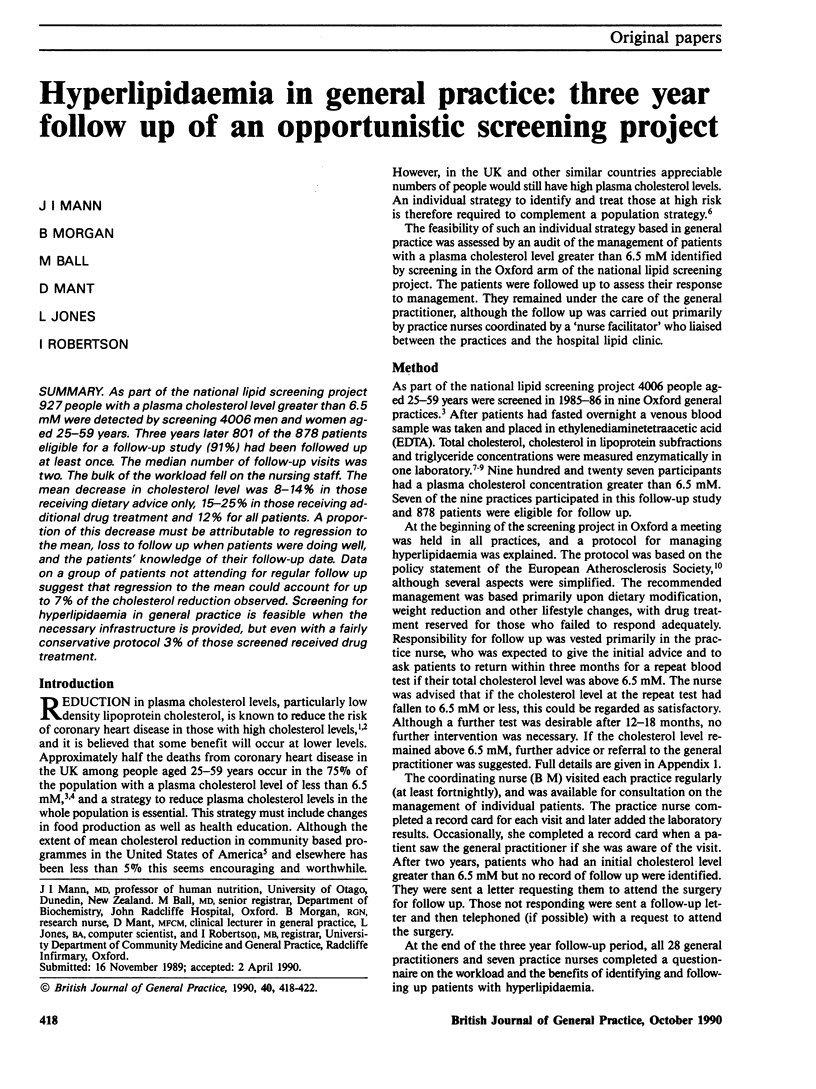
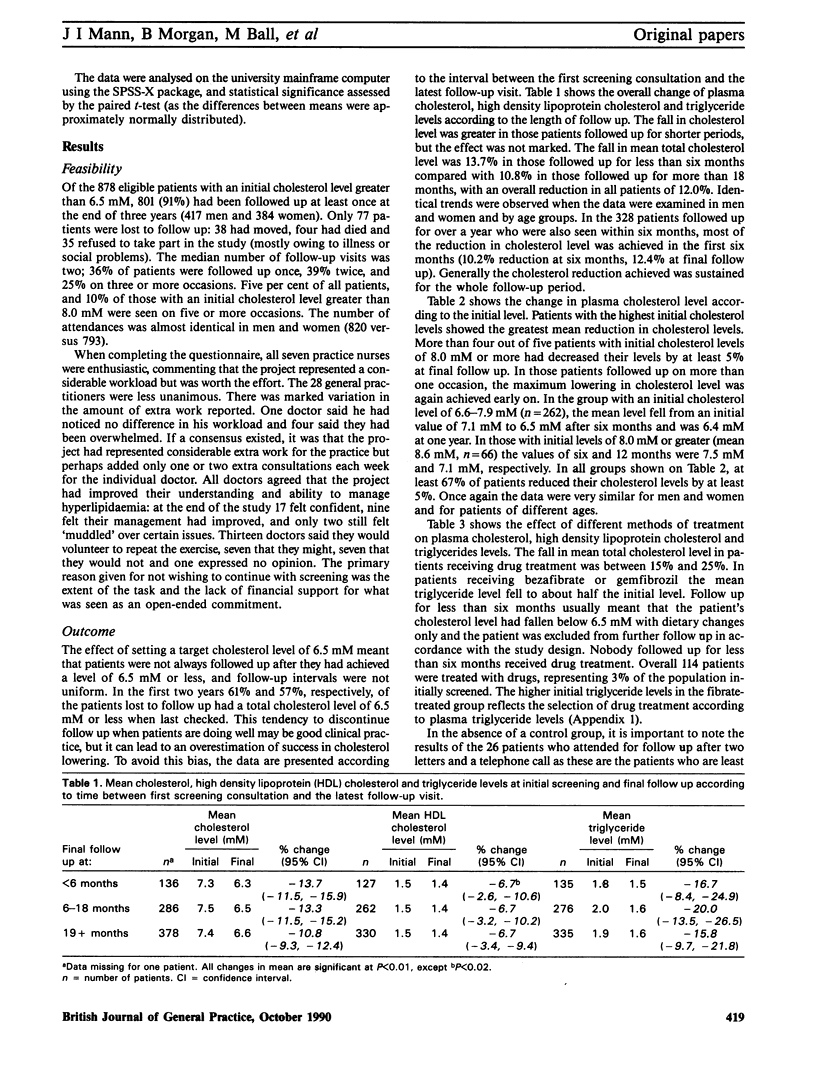
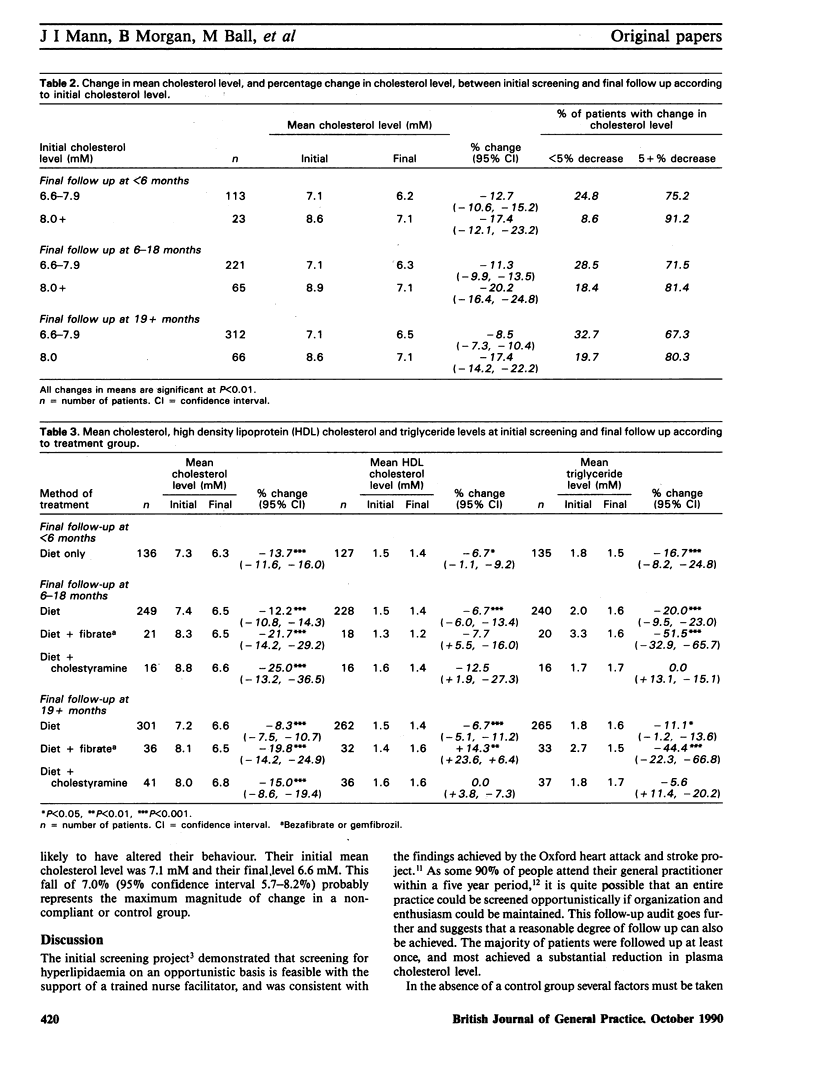
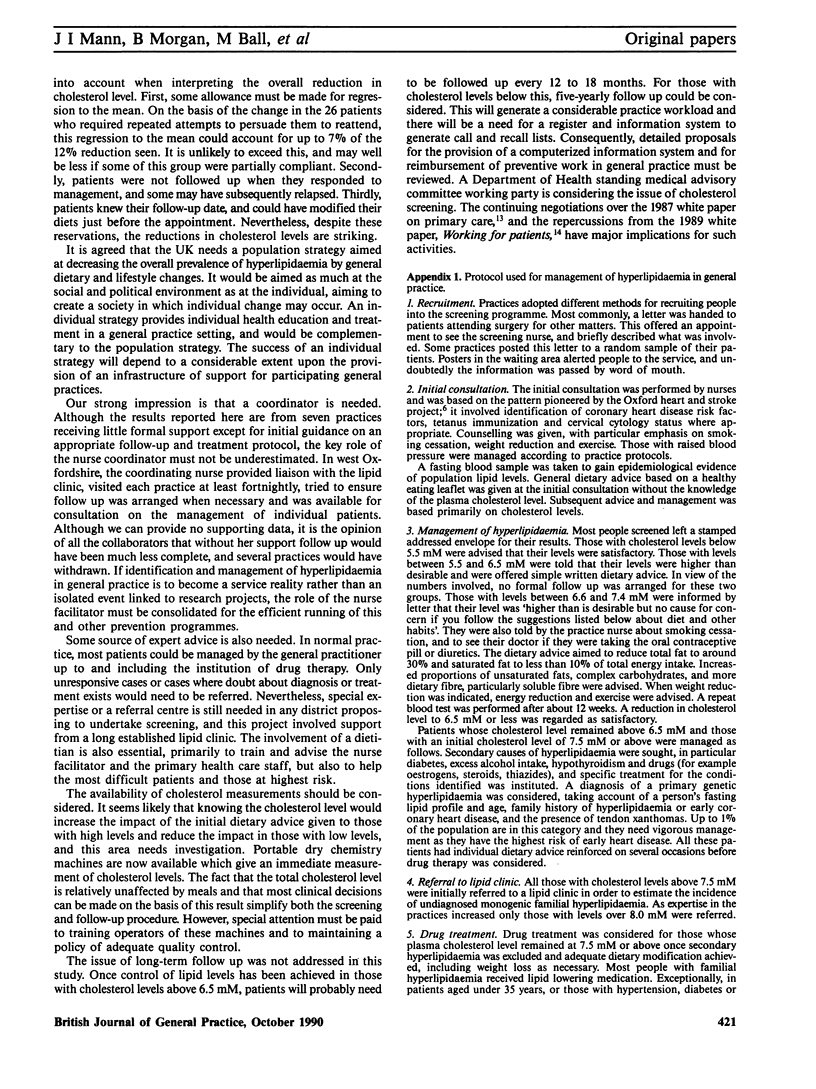
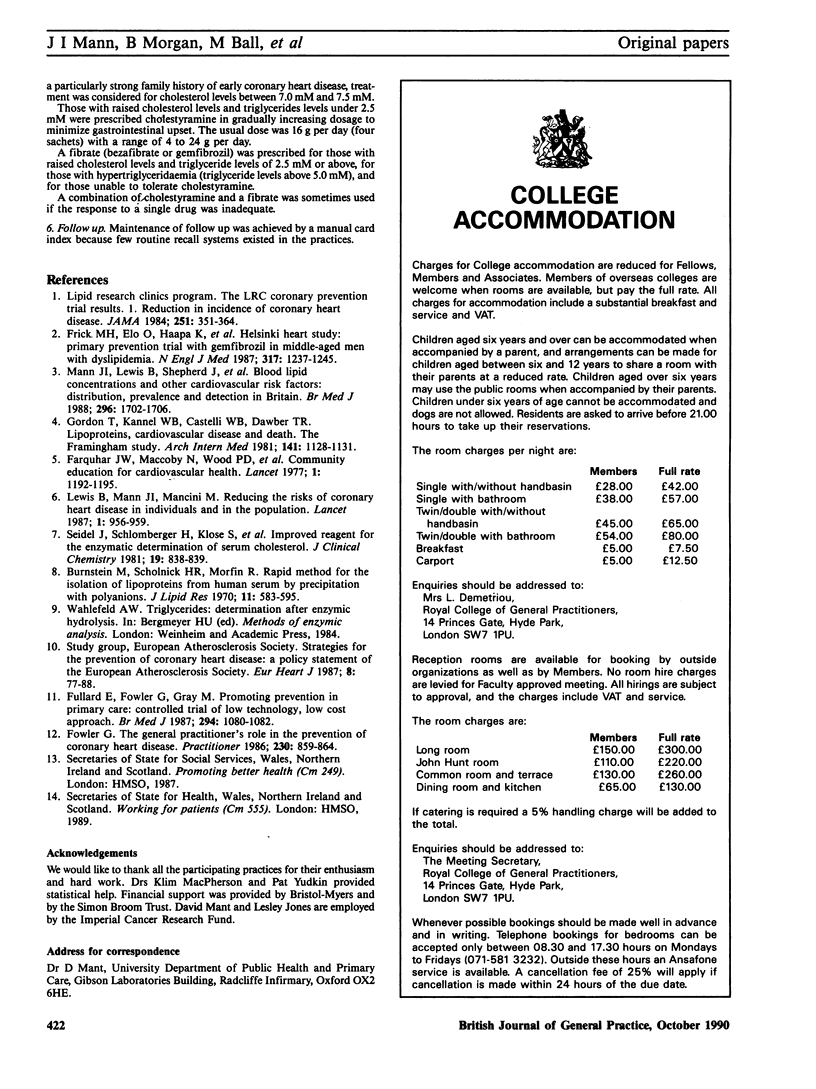
Selected References
These references are in PubMed. This may not be the complete list of references from this article.
- Burstein M., Scholnick H. R., Morfin R. Rapid method for the isolation of lipoproteins from human serum by precipitation with polyanions. J Lipid Res. 1970 Nov;11(6):583–595. [PubMed] [Google Scholar]
- Farquhar J. W., Maccoby N., Wood P. D., Alexander J. K., Breitrose H., Brown B. W., Jr, Haskell W. L., McAlister A. L., Meyer A. J., Nash J. D. Community education for cardiovascular health. Lancet. 1977 Jun 4;1(8023):1192–1195. doi: 10.1016/s0140-6736(77)92727-1. [DOI] [PubMed] [Google Scholar]
- Fowler G. The general practitioner's role in the prevention of coronary heart disease. Practitioner. 1986 Oct;230(1420):859-62, 864. [PubMed] [Google Scholar]
- Frick M. H., Elo O., Haapa K., Heinonen O. P., Heinsalmi P., Helo P., Huttunen J. K., Kaitaniemi P., Koskinen P., Manninen V. Helsinki Heart Study: primary-prevention trial with gemfibrozil in middle-aged men with dyslipidemia. Safety of treatment, changes in risk factors, and incidence of coronary heart disease. N Engl J Med. 1987 Nov 12;317(20):1237–1245. doi: 10.1056/NEJM198711123172001. [DOI] [PubMed] [Google Scholar]
- Fullard E., Fowler G., Gray M. Promoting prevention in primary care: controlled trial of low technology, low cost approach. Br Med J (Clin Res Ed) 1987 Apr 25;294(6579):1080–1082. doi: 10.1136/bmj.294.6579.1080. [DOI] [PMC free article] [PubMed] [Google Scholar]
- Gordon T., Kannel W. B., Castelli W. P., Dawber T. R. Lipoproteins, cardiovascular disease, and death. The Framingham study. Arch Intern Med. 1981 Aug;141(9):1128–1131. [PubMed] [Google Scholar]
- Lewis B., Mann J. I., Mancini M. Reducing the risks of coronary heart disease in individuals and in the population. Lancet. 1986 Apr 26;1(8487):956–959. doi: 10.1016/s0140-6736(86)91054-8. [DOI] [PubMed] [Google Scholar]
- Mann J. I., Lewis B., Shepherd J., Winder A. F., Fenster S., Rose L., Morgan B. Blood lipid concentrations and other cardiovascular risk factors: distribution, prevalence, and detection in Britain. Br Med J (Clin Res Ed) 1988 Jun 18;296(6638):1702–1706. doi: 10.1136/bmj.296.6638.1702. [DOI] [PMC free article] [PubMed] [Google Scholar]


